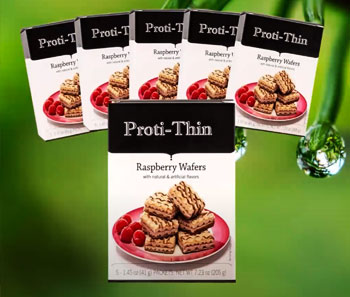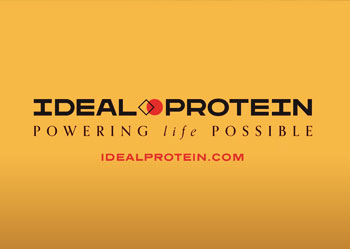When it comes to popular protein-based weight loss programs, two big names often come up – Proti-Thin and Ideal Protein.
Both offer pre-packaged meals and snacks designed to help people lose weight quickly by getting them into ketosis. But there are some key differences between these two plans that are worth examining before choosing one.
This comprehensive guide provides an in-depth look at Proti-Thin and Ideal Protein, including an overview of each, and a detailed side-by-side comparison to help you determine which may be better for your needs and preferences.
A Brief Comparison Table
| Category | Proti-Thin | Ideal Protein |
| Cost | Expensive for full program, but more budget-friendly for partial program | Very expensive for full program |
| Meal Plan Structure | Pre-packaged meals 3x a day, with snacks | Pre-packaged foods 4x a day, with no snacks |
| Food Taste & Variety | Very good taste and variety | Mediocre taste, limited variety |
| Ketosis Approach | Low-carb, high-protein, moderate fat | Extremely low-carb, high-protein, low-fat |
| Exercise Recommended? | Yes | No exercise until stabalized |
| Phases | 2 main phases | 4 incremental phases |
| Health Coaching | Minimal coaching | Weekly coaching required |
| Target Audience | Motivated self-starters | Need more guidance |
| Average Weight Loss | 10-15 lbs per month | 8-10 lbs per month |
| Sustainability | Difficult after program ends | Easier to sustain |
Overview of Proti-Thin

Proti-Thin is a ketogenic weight loss program that provides pre-packaged, low-carb meals and snacks.
It was created in 1979 by Dr. Theodore Zalman as an easier alternative to very low-calorie diets for rapid weight loss. Here are some key details about Proti-Thin:
- Two main phases – There is an Active Weight Loss phase where you eat Proti-Thin foods exclusively, followed by a Transition phase where you gradually reintroduce other foods.
- Pre-packaged foods – You’ll eat Proti-Thin branded bars, shakes, and meals for your main food intake. Supplements and very limited produce are also allowed.
- High protein, lower carb, moderate fat – The macros focus on high protein, emphasizing lean meats and vegetarian proteins in meals. Carbs are reduced substantially but not extremely low. Dietary fat is moderate.
- Exercise recommended – Light cardio and strength training is encouraged while on the full Active phase for maximum results.
- Minimal coaching – You’ll check in periodically with a coach, but Proti-Thin requires more self-motivation than programs with frequent coaching.
- 10-15 lbs weight loss per month – Many can expect to lose 10 or more pounds weekly on the full Active phase. Greater weight loss is possible for those with more to lose.
- Difficult sustainability – Biggest complaint is regaining weight after program ends. Sustainability requires major lifestyle changes.
Overview of Ideal Protein
Ideal Protein was created in the 1970s by Dr. Tran Tien Chanh for weight loss purposes. It focuses on getting into deep ketosis fast by severely limiting carbs. Here are the basics:
- Four phases – There are four gradual phases: Weight Loss, Stabilization, Adaptation, and Maintenance.
- Pre-packaged foods – You’ll eat Ideal Protein branded bars, shakes, soups, puddings, drinks, etc. Vegetables are also permitted.
- Extremely low carb, high protein, low fat – Carbs are restricted to only 20-50g daily. Protein is a goal of 1.5g per kg of weight. Fat intake is also very low.
- No exercise initially – Exercise is restricted until weight stabilizes to avoid muscle loss. Light walking is permitted.
- Weekly coaching – Weekly one-on-one coaching is required to teach lifestyle changes needed for success.
- 8-10 lbs weekly weight loss – Many lose up to 2 lbs per week or more, but less than with Proti-Thin.
- Easier sustainability – The lifestyle habits and food awareness taught improve sustainability.
Also Read: Comparison Between Golo And Calibrate
Key Differences Between Proti-Thin and Ideal Protein
Proti-Thin and Ideal Protein take different approaches to ketogenic weight loss. Here is an in-depth comparison between the two:
Cost

Both plans are expensive if you purchase the full programs including all meals, supplements, and coaching. However, Ideal Protein tends to cost significantly more:
- Proti-Thin – The full program averages $400-$500 monthly. The partial program with snacks and supplements but your own clean meals runs $200-$300 usually.
- Ideal Protein – Expected monthly costs are $500-$700+ for the complete program with all foods, supplements, coaching, and lab testing. Partial programs are not really offered.
Proti-Thin makes it more affordable to follow the plan without buying all pre-made meals. Ideal Protein heavily promotes purchasing their full program for maximum results.
Meal Plan Structure
While both provide pre-packaged foods, their meal plan approaches differ:
- Proti-Thin – You’ll eat three Proti-Thin meals per day, plus 1-2 protein snacks. Calories are not counted, but portion control is encouraged.
- Ideal Protein – You’ll eat 4 Ideal Protein meals per day – breakfast, lunch, dinner, and before bed. No other snacks or foods are allowed.
Proti-Thin offers more flexibility with snacks and doesn’t require as rigid timing of meals, while Ideal Protein enforces stricter portion and meal frequency control.
Food Taste and Variety
In terms of taste and food options, Proti-Thin tends to be superior:
- Proti-Thin – Offers better taste and wider food variety including 60+ entrees, shakes, bars, desserts, chips, and more. Their meals are often described as similar to Lean Cuisine or Nutrisystem.
- Ideal Protein – Many complaints about taste. Food options are basic and repetitive like shakes, bars, chili, oatmeal, and limited entree options.
Proti-Thin just seems to put more emphasis on making their foods appetizing and enjoyable. Ideal Protein’s bland foods are one of the biggest patient complaints.
Ketosis Approach
While both aim for ketosis, their methods differ substantially:
- Proti-Thin – Uses a low-carb, high protein, moderate fat approach. Carbs are reduced to 40-60g daily, protein is increased substantially, and fat remains moderated but adequate.
- Ideal Protein – Utilizes an extremely low-carb, high-protein, low-fat method. Carbs are cut to only 20-50g per day, protein is increased to spare muscle, and fat intake is also dropped very low.
Ideal Protein reaches deeper ketosis faster, but some argue Proti-Thin’s higher calorie and fat intake leads to easier sustainability long-term.
Exercise Recommendations
The programs have opposing takes on exercising while on the ketogenic diet:
- Proti-Thin – Light cardio and strength training is encouraged for 30-45 minutes several times per week in the Active phase for best results.
- Ideal Protein – Exercising is actually discouraged until weight loss stabilizes. Only light walking is permitted initially to prevent loss of lean muscle mass.
Proti-Thin believes light exercise speeds weight loss, while Ideal Protein wants to spare muscle by restricting activity until keto-adapted.
Program Phases
While both start with an intensive weight loss phase, the structure differs after:
- Proti-Thin – A structured Active phase while eating Proti-Thin foods is followed by a Transition phase to gradually reintroduce regular foods.
- Ideal Protein – After the weight loss phase, there are three more phases (Stabilizing, Adapting, Maintenance) to incrementally increase carbs and calories.
Ideal Protein provides more guidance for transitioning off the ketogenic diet with their multi-phase approach. Proti-Thin leaves this largely up to the individual.
Coaching Approach
The level of coaching and accountability differs significantly:
- Proti-Thin – Minimal coaching is provided. They offer periodic optional group meetings and email check-ins, but you govern yourself mostly.
- Ideal Protein – Weekly one-on-one coaching is required for weighing in, providing accountability, and teaching lifestyle changes needed for maintaining results.
For self-disciplined people, Proti-Thin provides enough support. But for many, Ideal Protein’s intensive coaching leads to greater success.
Target Audience
Due to the different coaching approaches, the plans seem suited to different types of people:
- Proti-Thin – Best for self-motivated go-getters who are ok self-regulating without a lot of hand-holding.
- Ideal Protein – More successful for people who struggle with discipline and accountability. The mandated coaching helps drive results.
Proti-Thin fits self-starters, while Ideal Protein works better for those needing more oversight and external motivation.
Also watch this review video:
Average Weight Loss
In terms of typical weight loss per week, Proti-Thin seems to lead to quicker drops:
- Proti-Thin – Many lose 10-15+ pounds monthly in the Active phase. More is possible for those with substantial weight to lose.
- Ideal Protein – Average weekly weight loss is often 8-10 lbs monthly, slightly lower than Proti-Thin. But steady losses are common.
Proti-Thin’s higher calorie and fat approach seems effective for fast initial weight loss. Ideal Protein’s very low carb method leads to a bit slower but steady progress.
Long-Term Sustainability
The biggest complaint of Proti-Thin is weight regain after, while Ideal Protein may support better sustainability:
- Proti-Thin – Very hard to sustain the Proti-Thin regimen after ending the program, often leading to regaining weight. Significant lifestyle changes are required.
- Ideal Protein – The slower progress, coaching, and education help many continue losing or maintain results long-term by learning needed dietary and lifestyle habits.
The rapid losses of Proti-Thin are attractive but hard to maintain. Ideal Protein’s teaching of sustainable habits leads to better long-term outcomes for many.
Also Read: Comparison Between Orangetheory And Life Time Fitness
Frequently Asked Questions (FAQs)
No products are exactly the same as Ideal Protein since their foods are proprietary. But Keto-friendly brands like Slimfast Keto and Atkins offer similar bars, shakes and meals for a keto diet. Planning your own keto diet using foods at the grocery store is another, more affordable option.
On the Proti-Thin diet, most people lose 10-15 lbs per month following the full Active phase very closely. Some lose 20 lbs or more, especially heavier individuals with more weight to lose. Rapid loss comes from deep ketosis plus calorie and portion control.
The Ideal Protein diet is a form of a ketogenic diet, but more extreme, limiting carbs to only 20-50g daily. A standard keto diet reduces carbs to 20-50g net carbs but doesn’t restrict overall calories or protein.
On Ideal Protein, most people lose 1-2 lbs per week consistently, or 4-8 lbs monthly. Very strict adherents may lose up to 3 lbs weekly, or up to 10-12 lbs monthly. The extremely low carb approach leads to steady, gradual ketosis and weight loss.
Also Read: Is Ascent Better Than Optimum Nutrition?
Final Thoughts
In the end, Ideal Protein and Proti-Thin take two very different approaches to rapid ketogenic weight loss. Proti-Thin is less stringent for faster results, while Ideal Protein enforces stricter rules for slower but steady progress. Proti-Thin may suit self-driven people wanting quicker results in the short-term.
But Ideal Protein’s coaching-focused method leads to better compliance and sustainable results for many long-term. Assessing your budget, food preferences, and ability to self-regulate can help determine which plan may help you meet your goals and needs best.
